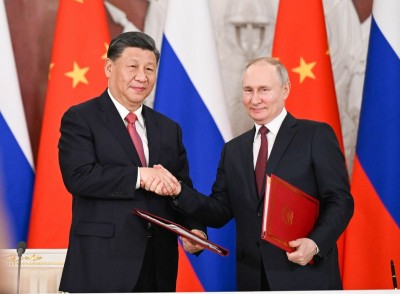
‘Robust’ economic growth in Asia-Pacific last year and ‘promising’ prospects ahead – UN report
New York, May 8 (IBNS): Economies in the Asia-Pacific region registered robust growth in 2017 and prospects for this year look promising, the United Nations development arm in the region said, urging countries to take advantage of positive conditions and address underlying vulnerabilities.
Recent strong growth can also provide resources critical to realizing the ambitious 2030 Agenda for Sustainable Development, said the UN Economic and Social Commission for Asia and the Pacific (ESCAP).
“The prospects for mobilizing financing for development purposes are promising,” said Shamshad Akhtar, the Executive Secretary of ESCAP, which is based in Thailand.
According to the Economic and Social Survey of Asia and the Pacific – ESCAP’s long-running flagship publication – developing economies are on track to record an overall growth rate of 5.8 per cent in 2017, compared with 5.4 per cent the previous year.
For 2018 and 2019, these economies are projected to grow by 5.5 per cent, with concern over debt levels in China offset by a recovery in India and steady performance in the rest of the region.
Strengthening resilience to mitigate future risks
Bolstering the fundamentals will be important as the medium-term outlook sees growth trending downward in several countries owing to ageing populations, slower capital accumulation and modest productivity gains.
At the same time, “rapid technological advancements, while promising immense opportunities are also posing considerable challenges in terms of job polarization and income and wealth inequalities,” said Akhtar.
The report also made the case for the use of so-called macroprudential measures (measures which look at the financial system as a whole) to mitigate risks and keep economies stable.
“Lifting productivity will require a ‘whole-of-Government approach’ for fostering science, technology and innovation and investments in relevant skills and infrastructure,” urged ESCAP, highlighting the need to strengthen social protection and efficient use of resources.
Tax reform and strengthening tax collection could also add as much as 8 per cent to the gross domestic product (GDP) of countries such as Myanmar or Tajikistan; and about 3 to 4 per cent in larger countries, like China, India or Indonesia, according to ESCAP.
Support Our Journalism
We cannot do without you.. your contribution supports unbiased journalism
IBNS is not driven by any ism- not wokeism, not racism, not skewed secularism, not hyper right-wing or left liberal ideals, nor by any hardline religious beliefs or hyper nationalism. We want to serve you good old objective news, as they are. We do not judge or preach. We let people decide for themselves. We only try to present factual and well-sourced news.







